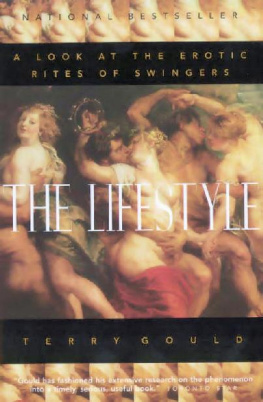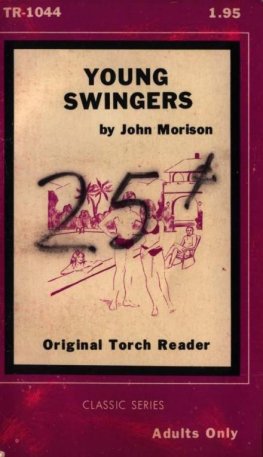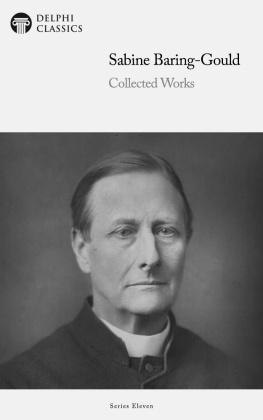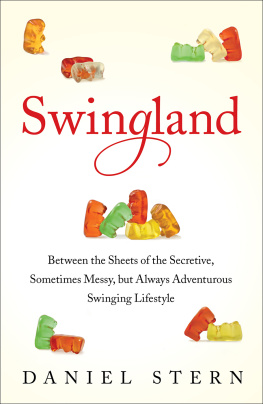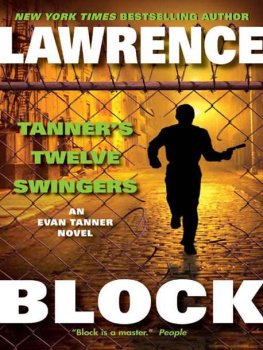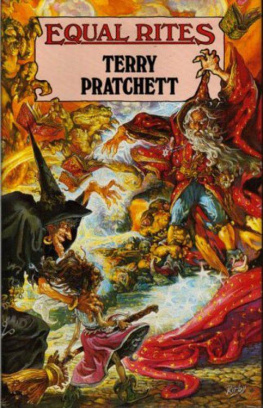Terry Gould - The Lifestyle: A Look at the Erotic Rites of Swingers
Here you can read online Terry Gould - The Lifestyle: A Look at the Erotic Rites of Swingers full text of the book (entire story) in english for free. Download pdf and epub, get meaning, cover and reviews about this ebook. year: 2010, publisher: Vintage Canada, genre: Detective and thriller. Description of the work, (preface) as well as reviews are available. Best literature library LitArk.com created for fans of good reading and offers a wide selection of genres:
Romance novel
Science fiction
Adventure
Detective
Science
History
Home and family
Prose
Art
Politics
Computer
Non-fiction
Religion
Business
Children
Humor
Choose a favorite category and find really read worthwhile books. Enjoy immersion in the world of imagination, feel the emotions of the characters or learn something new for yourself, make an fascinating discovery.
- Book:The Lifestyle: A Look at the Erotic Rites of Swingers
- Author:
- Publisher:Vintage Canada
- Genre:
- Year:2010
- Rating:5 / 5
- Favourites:Add to favourites
- Your mark:
- 100
- 1
- 2
- 3
- 4
- 5
The Lifestyle: A Look at the Erotic Rites of Swingers: summary, description and annotation
We offer to read an annotation, description, summary or preface (depends on what the author of the book "The Lifestyle: A Look at the Erotic Rites of Swingers" wrote himself). If you haven't found the necessary information about the book — write in the comments, we will try to find it.
Terry Gould: author's other books
Who wrote The Lifestyle: A Look at the Erotic Rites of Swingers? Find out the surname, the name of the author of the book and a list of all author's works by series.
The Lifestyle: A Look at the Erotic Rites of Swingers — read online for free the complete book (whole text) full work
Below is the text of the book, divided by pages. System saving the place of the last page read, allows you to conveniently read the book "The Lifestyle: A Look at the Erotic Rites of Swingers" online for free, without having to search again every time where you left off. Put a bookmark, and you can go to the page where you finished reading at any time.
Font size:
Interval:
Bookmark:

To my wife Leslie
Table of Contents
We ought not to view it as something special, as depraved or in some magical way better than other kinds of behavior. We ought to see it simply as a kind of behavior some disapprove of and others value, studying the process by which either or both perspectives are built up and maintained. HOWARD BECKER, OutsidersCHAPTER ONE
Welcome to the Lifestyle
Do not do unto others what you dont want others to do unto you. HILLELT ribal rituals of spouse exchange. Neolithic hordes dancing naked upon the heath. Whole cities pouring into the streets in libidinous revelry.
Throughout human history these practices have been used as a means to extend kinship ties, as celebrations of fertility, or as an annual blowing off of steam. Erotic rites were common in Canaan when God made His covenant with Abraham. As late as the 1940s extra-mateship liaison was an approved custom in 39 percent of cultures studied throughout the worldfrom the Himalayas to the South Seas and from the Arctic to the Amazon. Today we know that there is a deeper, unconscious motivation behind the rituals. They combine the two biological imperatives that paradoxically have governed the sex lives of humans for eons: the drive to seek long-term partners for raising children, and the equally powerful drive for genetic and sexual variety.
Of course, many of us do not accept shared eroticism between couples as a normal part of life. Sensual play between more than two people is often seen as coercive, compulsive, or even evil. That belief is the chief reason one of the great stories of our time has remained truly untold.
This book breaks the lock on denial. It tells the story of the lifestyle, a subculture that is now thriving worldwide, one in which millions of middle-class, married couples openly express their erotic fantasies with others. Accompany your own spouse to a lifestyle event and you will change your mind about the boundaries of behavior for pair-bonded humans. Acting within strict rules of etiquette, lifestyle couples participate to varying degrees in everything from sexual costume parties to multipartner sex as a form of social recreation within marriage. Every ball they attend revives the time-honored tradition of the rustic bacchanal.
The lifestyle has grown so quickly in recent years that, wherever you live, you wont have trouble finding it. It is not an underground movement or a cult. It is a public, grass-roots, heterosexual orientation among mainstream couples who claim to have overcome the kind of loneliness, jealousy, and shame adulterous marrieds endure. Lifestyle playcouples belong to three hundred formally affiliated clubs in two dozen countries, and to thousands of unaffiliated clubs. They have their own travel industry that flies them to a dozen vacation spots catering to their tastes. Hundreds of magazines and thousands of Web sites, news groups, and chat rooms keep them connected. Large lifestyle conventions are held eleven times a year in eight U.S. states, sometimes monopolizing entire resorts. The three-day Lifestyles 96 convention in San Diego drew thirty-five hundred people from 437 cities in seven countries. One-third of the participants had postgraduate degrees; almost a third voted Republican; 40 percent considered themselves practicing Protestants, Catholics or Jews. Public figures with towering positions in society, pro-sex feminists, and even evangelical Christians attended the convention as lifestylers.
But where did this term lifestyle come from? Arent the couples who say they are in the lifestyle talking about swinging the free and easy sharing of spouses at parties? Lifestylers will patiently tell you that some of their number dont go that far. They adopted their global name in the 1980s because more and more straight couples were attending their events and they wanted to be freed from the snappy terms that made them into media fast food. A lifestyle party quite often does not culminate in sexual intercourse among couples; roughly 10 percent of the people who attend just like being in an atmosphere where such an interchange is conceivable. Lifestylers believe they live in a certain style that melds responsible family valuesmatrimony, children, emotional monogamywith the erotic cultivation of their marriages through the practice of rites they celebrate as fun and natural.
Its that simple. And its that complicated.
Even the most avid proponents of the subculture admit the behavior of playcouples can sometimes appear pornographica threat to civil societyespecially when strobe-lit in a cameras flash or summed up by the bug-eyed mainstream press as a shocking expose of swingers running rampant. Lifestylers have been described as uncivilized, dangerous, smelly, repellent, tacky, and revolting, labeled as deviates and zoomorphized as lizards and hippos. Never comfortable with the chaos of sex, city police forces and government agencies regularly investigate lifestyle clubs: they infiltrate dances and threaten to withdraw the liquor licenses of the hotels that host them; they raid private homes and charge participants with public lewdness; and they sometimes wind up arresting themselves since a number of male and female police officers are lifestyle members.
Despite this harassment by morality squads, most studies show lifestylers to be absolutely not deviant and quite normal psychologically. They also note the behavior of swingers does not involve a victim. The movement has a California-based overseeing body, called the Lifestyles Organization, or LSO, that certifies clubs as ethical, nondiscriminatory, and law-abiding. The lifestyles out-of-the-closet spokespeople, who come from the ranks of social workers and business managers, doctors and mortgage brokers, insist their millions of compatriots behave in a safe and consensual fashion. On LSOs board of directors sits an executive from Mensa and a former chair of the sociology department at the University of California at Riverside. They broaden the discussion of the lifestyle by claiming that when examined in the cool light of the latest research on the biological, evolutionary, and emotional roots of human sexuality, the lives of many playcouples force us to re-ask some of the most crucial questions of human history. Why, for instance, has the word morals always referred almost entirely to sexual matters? Why has sexual self-sacrifice always been seen as morally superior to sexual indulgence? And why has religion always been so angrily focused on controlling our sex lives, from the time God sent down fire and brimstone to exterminate homosexuals and orgiasts to the Rev. Billy Grahams remark that if God doesnt do to America what he did to Sodom and Gomorrah, He owes them an apology?
For average citizens, however, it comes down to this question: Can you dress for the harem or the beach, go to a party with your spouse of ten years, enjoy a night of bacchic sexuality, and still be a good, happily married parent?
You can if youre in the lifestyle. At least according to lifestylers.

Although the lifestyles tradition of sharing spouses has remained unchanged since the subcultures public emergence after World War II, the medias reporting of the practice has gone through various incarnations. Back in the 1950s it was dubbed wife swapping in the male-centered press, which alleged that otherwise straight suburban husbands were having their wives throw house keys into a hat to see who would retire with whom for the evening. In the sexually revolutionary sixties wife swapping progressed to a more democratically arranged swinging. Millions watched the 1969 film Bob & Carol & Ted & Alice enlivened by the crowded engagements of California couples who were treated as adventurous and hip in some press outlets, although their real-life counterparts in the heartland were usually declared bizarre and sick. The seventies saw couples warned away from swinging because of the herpes virus and in the eighties they were informed they could die of AIDS if they participated. By the end of the Reagan era swinging was supposedly over, a relic, like LSD and Charles Manson, of the darker side of the best-forgotten past. In their 1989 book Burning Desires , journalists Steve Chappie and David Talbot surveyed the coupling patterns of Americans and declared spouse sharing belly up, doused by a wave of sexual terror. AIDS-terrified swing clubs were closing and those dwindling deviants who hung on seemed to belong in a Fellini film. Swingers had changed their name but they couldnt change the new realities of sex. A Lifestyles convention of die-hards in Las Vegas exhibited mounds of wilted flesh pushed towards dangerous extremes in the service of pleasure. Hip young people were repulsed. There was no doubt about it: swinging was no longer cool.
Next pageFont size:
Interval:
Bookmark:
Similar books «The Lifestyle: A Look at the Erotic Rites of Swingers»
Look at similar books to The Lifestyle: A Look at the Erotic Rites of Swingers. We have selected literature similar in name and meaning in the hope of providing readers with more options to find new, interesting, not yet read works.
Discussion, reviews of the book The Lifestyle: A Look at the Erotic Rites of Swingers and just readers' own opinions. Leave your comments, write what you think about the work, its meaning or the main characters. Specify what exactly you liked and what you didn't like, and why you think so.

